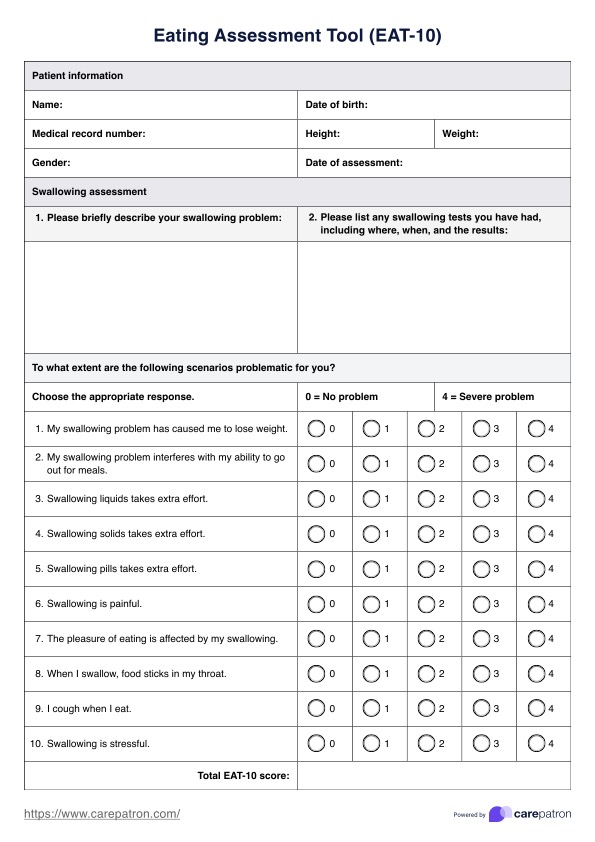EAT-10 stands for eating assessment tool-10, a validated dysphagia screening tool used to assess swallowing difficulties and their impact on a patient’s quality of life. It consists of ten self-reported questions that help quantify swallowing disorders and determine the need for further clinical evaluation.

EAT-10
Download Carepatron's free Eating Assessment Tool-10 (EAT-10) PDF and effectively assess dysphagia risk or other swallowing disorders.
EAT-10 Template
Commonly asked questions
Yes, the EAT-10 has strong psychometric properties, demonstrating high reliability and validity across diverse patient populations. It is widely used in clinical practice for its accuracy in identifying oropharyngeal dysphagia severity and predicting aspiration risk.
Oropharyngeal dysphagia involves difficulty starting a swallow due to structural, anatomic, or neuromuscular issues, while esophageal dysphagia occurs after swallowing from structural problems, external compression, or motility disorders.
EHR and practice management software
Get started for free
*No credit card required
Free
$0/usd
Unlimited clients
Telehealth
1GB of storage
Client portal text
Automated billing and online payments











